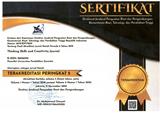Dibalik Fakta dan Mitos Fenomena Super Blue “Blood” Moon
DOI:
https://doi.org/10.23887/jfi.v1i1.13972Abstrak
This article discusses a natural phenomenon namely Super Blue (Blood) Moon (later to be referred as SBBM) in terms of scientific and mythical points of view. The method used in this study is literature study promoting library research as its instrument.Thus, as much literature as possible in a variety of types such as books, journals, and any articles is collected and later analyzed. Having synthesized the literature, this study finds out that in terms of science, it is a very phenomenal occurrence since there are three natural phenomena namely super moon, blood moon, and blue moon happening simultaneously. Researchers and scientists usually seize this moment for science. For instance, some of them study the temperature shift of the moon. In the meantime, in terms of mythical point of view, some beliefs starting from the moon fights with the sun, the moon is eaten by a dragon, and the moon contributes to maternal fertility, still exist among people around the world. In conclusion, there needs to be further socialization that SBBM is a scientific phenomenon and that it has nothing to do with the existing myths around the globe.
Referensi
Buku el. (2018). Gerhana Bulan Total Referensidari MrEclipse.com, Timeanddate.com, In-the-sky.org Space.com, Universetoday.com
Firman, H. (2018). Filsafat Sains. Program Studi Pendidikan IPA. Sekolah Pasca Sarjana UPI.
Ika Cahyanti, Sukatman, Furoidatul Husniah. 2017. Mitos dalam Ritual Ruwatan Masyarakat Madura di Kecamatan Gending Kabupaten Probolinggo. Jurnal Edukasi Universitas Jember, Vol. 4, No. 13-19.
Iswidayati Sri. 2007. Fungsi mitos dalam kehidupan sosial budaya masyarakat pendukungnya. Harmonia Jurnal Pengetahuan dan Pemikiran Seni. Vol. 8, No.2.
Ladyman, J. (2002). Understanding Philophy of Science. London: Routledge.
Manoia, V. J. (1986). What is Science? : Introduction to the structure and methodology of science. Lenham, MD: University Press of America.
Muharam Riza.(2018). Istimewanya gerhana bulan total 31 Januari 2918. Terdapat dalam http://www.infoastronomy.org/2017/10/istimewanya-gerhana-bulan-total-31-januari-2018.html.
Pius A. Partanto dan M. Dahlan Al Barry, Kamus Imiah Populer, (Surabaya: Arkola, 2001).
Purnama Putra. 2009. Mitos dan Kearifan Lokal. Jurnal PendarPenda. Vol. 2, No. 4.
Pupafis. (2013). Ekspalanasi ilmiah dan eksplanasi pedagogis. Terdapat http://momentumsudutdanrotasibendategar.blogspot.co.id.
Ridzky Firmansyah Fahmi. 2017. Mitos danau sebagai pelestari lingkungan. Jurnal Pendidikan Bahasa dan Sastra Indonesia Universitas Swadaya Gunung Jati (UNSWAGATI). Vol. 4, No. 2.
Roger M. Keesing, Cultural Anthropology: A Contemporary Perspective, diterjemahkan R.G. Soekadijo, Antropolgi Budaya: Suatu Perspektif Kontemporer. Edisi Kedua. (Jakarta: Penerbit Erlangga, 1992).
Roibin, Agama dan Mitos: Dari Imajinasi Kreatif Menuju Realitas Yang Dinamis, dalam (El Harakah Jurnal Budaya Islam, Vol.9 no 3, September –Desember 2007).
Tim Penyusun Kamus Pusat Pembinaan dan Pengembangan Bahasa, Kamus Besar Bahasa Indonesia. (Jakarta: Balai Pustaka, 1999).
Yusdani. 2010. Menggali makna mitos dalam sastra dan budaya nusantara. Millah Jurnal Studi Agama.Vol.10.No.1.
Unduhan
Diterbitkan
Terbitan
Bagian
Lisensi

Jurnal Filsafat Indonesia Undiksha is licensed under a Creative Commons Attribution-ShareAlike 4.0 International License.



